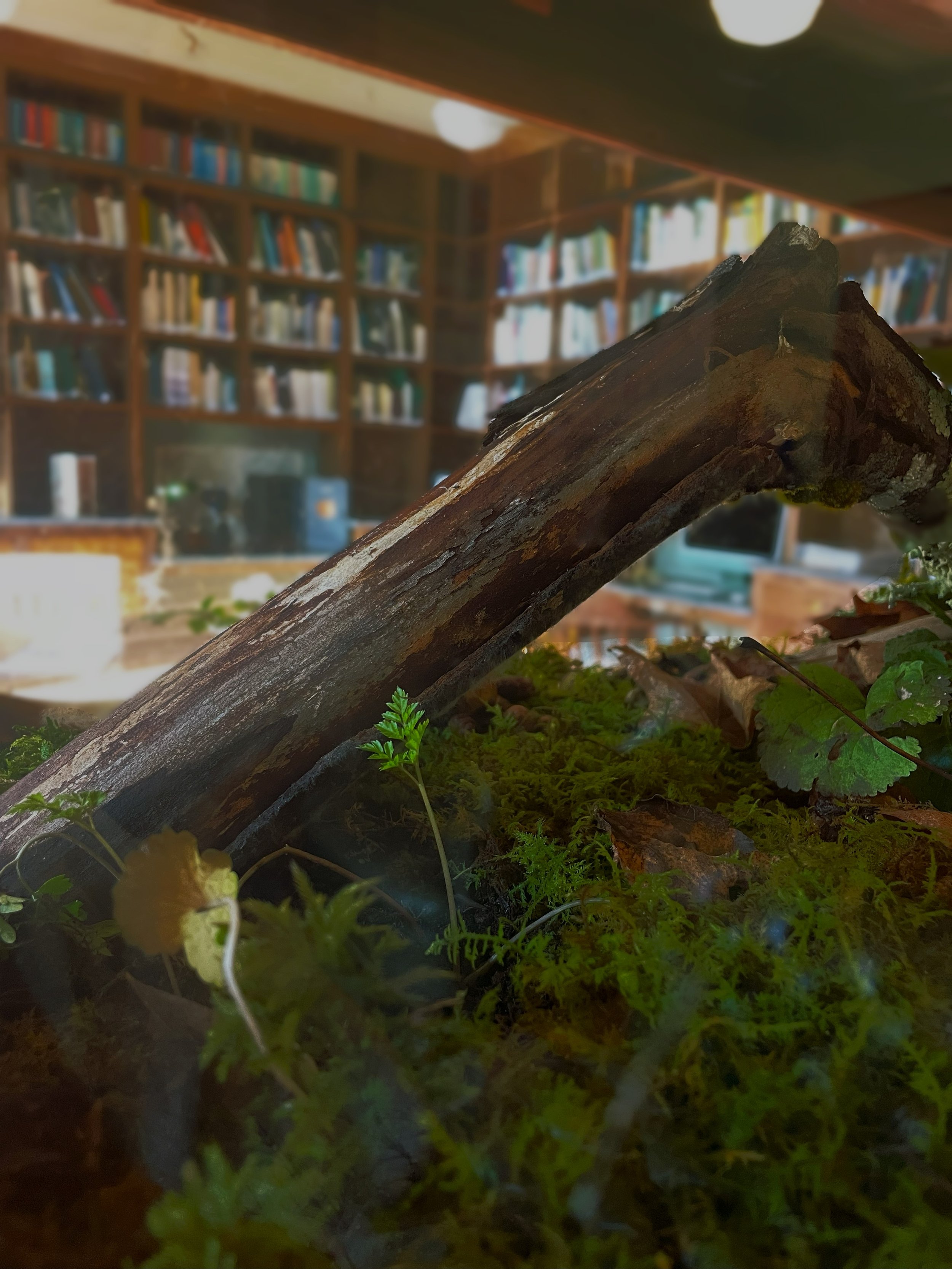While walking through the woods, there are endless sources of amazement. Entire worlds teeming with life exist under every rock and at the base of each tree. But as the days get shorter and nature prepares to rest, getting outside can be harder—and certainly colder! Now is the perfect time to bring a little bit of nature inside by crafting a terrarium.
Terrariums are small, enclosed indoor gardens. They can be as tiny as the smallest jar, or as large as an aquarium. Terrariums, once established, can contain entire self-sustaining little ecosystems. They are a wonderful way to see natural cycles at work on a small scale. When it rains in the forest, plants and soil absorb some water, and the excess collects as groundwater or flows into the watershed as runoff. As the sun comes out, water evaporates from transpiring leaves, and from lakes, rivers, and oceans, creating clouds and repeating the cycle. In a closed terrarium, a similar cycle takes place: initial water is added to the system, which gets absorbed into the soil and plants within. As water evaporates and transpires, it will collect in the form of condensation on the walls of the container, before dripping down to moisten the soil again.
Photosynthesis and decomposition go hand in hand within a terrarium; microbes in the soil use oxygen and work to break down any decaying material (producing carbon dioxide in the process), meanwhile, plants within the system are using that carbon dioxide, along with water and sunlight, to photosynthesize (producing sugars to feed on and oxygen that gets released into the system). Terrariums do best in partial or indirect sunlight, so that light can be used for processes like evaporation and photosynthesis without overheating the system.
Here at BRDC, we recently revamped our library terrarium to house a small-scale native forest floor ecosystem. A living library centerpiece that highlights the natural beauty of the blue ridge, this is a relatively large terrarium that houses mosses, ferns, lichens, and some small vascular plants. Displayed inside are some collected treasures including a box turtle shell, the skull and antlers of a white-tailed deer, and adorable little hemlock cones.
Making your own terrarium is a great activity to get creative while bringing a way to appreciate nature daily into your home, and learning a bit to boot! Terrariums can be designed to replicate specific ecosystems or biomes, to feature a certain plant, or to showcase a natural trinket. Let nature inspire you, and your interests guide you. To create your own terrarium, start with any container that can be covered or closed. Most terrariums contain four basic layers: rocks, soil, plants/decor, and moss. Rocks are layered in the base of a terrarium, providing an area for excess water to collect within the system. This helps ensure that the soil layer is not constantly saturated with water, which could drown your plants or cause unwanted bacterial or fungal growth. Next, soil–where microbes work, and plants take root. It’s important to use a soil that will provide proper nutrients for the specific plants you choose for your terrarium.
Once layers of rock and soil are inside your container, plants and decoration can be placed. Ensure that any plants selected are of an appropriate size for the container you use, you don’t want to pick plants that will outgrow or overtake your system. Decor can be rocks, sticks, bone, really anything you find beautiful or interesting. Once plants are in the soil, moss is usually placed on top of any bare areas. Moss helps regulate moisture, and looks good doing it.
All of these materials can be bought at a local garden store, or collected from outside. If you do choose to collect from nature, know that this is not technically in line with Leave No Trace principles. Be respectful of the larger ecosystem and conscious of what you take from it. While harvesting living materials, such as moss, take only small sections from patches large and healthy enough to regrow.
If you attempt to make your own terrarium, take care and have fun! We would love to see what you create, so tag us or reach out on social media, or email us a photo of your terrarium crafting endeavors. Get creative, get your hands dirty, and take in all the wonders as you watch your own little world come to life.
For further reading and more information on making your own terrarium, check out these links:
https://outdooradventures.wp.tulane.edu/2020/04/18/bring-the-great-outdoors-inside-native-terrarium-diy/ - Webpage, step by step instructions on crafting a terrarium native to your area
https://www.rooseveltspdx.com/blog/how-to-water-terrarium-95jrg - Webpage, terrarium care basics
https://www.youtube.com/watch?v=s6DnKCnlSxE - Video, how to make a terrarium native to your area












